A Message from Tommy Espinoza, RDF's President and CEO
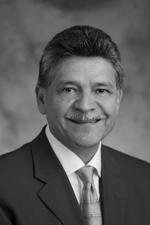 RDF’s
mission has always been to serve the Hispanic and poor families alike
and as part of that, we invest in schools that have high academic
standards and educators that have the expertise and passion to educate
underserved children and enable them to reach their highest potential.
RDF provides financing to schools with innovative educational programs
that are managed by individuals with proven leadership
qualities. RDF’s
mission has always been to serve the Hispanic and poor families alike
and as part of that, we invest in schools that have high academic
standards and educators that have the expertise and passion to educate
underserved children and enable them to reach their highest potential.
RDF provides financing to schools with innovative educational programs
that are managed by individuals with proven leadership
qualities.
I was recently invited to
the University of Notre Dame to participate in a think-tank discussion
on forming a Catholic education leadership program. This gave me the
opportunity to listen and share ideas with businessmen, educators and
religious leaders from around the country on a subject dear to my heart,
education.
My experience at Notre
Dame was extremely rewarding and while various points of views were
discussed, a few major points of agreement were; the key role of the
principal and the leadership skills they should possess. These skills
include having a strong Catholic faith, managerial skills and most
importantly, a passion in educating children.
Discussions such as the
one at Notre Dame, are one of the many forums taking place and are
essential to the success of our children’s education because they
produce innovative ways of thinking, in regards to educating the next
generation.
In this issue of VOCES,
we look at different organizations and leaders who understand the
importance of innovative education. Finding unique and informative
resources have been increasingly important, as we move forward to a
digital and ever changing world of education.
We
look forward to receiving feedback from you, and we hope you will
share your comments and suggestions on our Facebook page, www.facebook.com/razadevelopmentfund
|
Innovation in Education: Why is it Needed and Will it Work?
By Paul Brinkley-Rogers
The
need for a quality education is acute, the road is long and hard, and
millions of young Latinos are searching for directions so that they can
earn degrees and find good jobs.
The statistics are grim.
The dropout rate for Hispanics age 16-19 is more than 21%, the highest
of all ethnic groups, according to the Pew Hispanic Center. A quarter of
Mexican immigrant children do not finish high school while 41% of adult
Hispanics over 20 do not have a high school diploma, compared with 23%
of blacks and 14% of whites.
But there is hope.
Innovation is happening in education. What is it? Will it help children
learn? Will hiring great teachers result in good grades? Will these
ideas help a new generation of Latino youngsters reach their full
potential in multicultural America, and in an increasingly competitive
world?
In this issue, Voces interviewed educators pioneering these changes.
We talked to two young
Hispanics who, despite poverty, used determination to earn degrees and
distinction in the workplace.
Latinos working for
American Honda and Intel, discussed how their organizations make
education and career opportunities available.
Latinas discussed the need for more women to become scientists and engineers.
Voces also looked at schools which have gone beyond
bilingual education by also offering Mandarin Chinese. A Phoenix
pre-school teaching 1-5 year olds in Chinese, Spanish and English, plans
to add Arabic. Latino parents with children in these schools said they
believe kids fluent in key languages will be highly employable.
Often, it takes a
visionary leader to make innovation happen. The leader maps out the
idea. Excited board members lend support. The idea energizes teachers to
make a difference. Parents compete to get their children into that
school.
Richard Tapia, a
mathematician who is director of the Center for Excellent and Equity in
Education at Rice University in Houston, says that the need for fresh
ideas and directions is so intense he gets at least one invitation per
day to speak at public forums.
 Tapia
says until Hispanics graduate from university in large numbers and are
prominent in the sciences and other demanding fields, they will not
occupy key power positions. “It is clear,” he said, “when you look at
where American leaders come from that if we are not where people are
going to be picked, we are not going to lead.” Tapia
says until Hispanics graduate from university in large numbers and are
prominent in the sciences and other demanding fields, they will not
occupy key power positions. “It is clear,” he said, “when you look at
where American leaders come from that if we are not where people are
going to be picked, we are not going to lead.”
Prejudice, Tapia said, is
not holding Latinos back: the issue is a lack of graduate degrees and
training affecting people from all ethnic groups.
Wendy Kopp, CEO of Teach
for America which has prepared 20,000 educators to work in underserved
communities, says that TFA’s work shows that lack of educational
opportunity robs kids of success, not socio-economic background.
“We live in a country
that aspires so admirably to be a place of equal opportunity and yet
somehow we have the reality that 13 million kids who grow up below the
poverty line, are by fourth grade already three grade levels behind on
average,” she said in a recent interview. Half will not graduate from
high school. Those who do will have eighth grade skills compared with
kids in high income areas. Only 1 in 10 will earn a college
degree.
Robert Carreon in
McAllen, TX, runs a TFA corps of 130 teachers working in 12 school
districts. There are 400,000 students in the Rio Grande Valley. 80% come
from homes where mostly Spanish is spoken. One in three have “limited
English proficiency,” according to the Texas Department of Education.
Before TFA arrived in
2003, Carreon said, teaching was done in English. TFA designed a
bilingual program designed to graduate students fluent in English and
Spanish who will use those languages in college. Command of two
languages is a plus in job hiring, he said. A second part of this
innovation trains students to be leaders.
Judith Camacho, executive
director of the Society for the Advancement of Chicanos and Native
Americans in Science (SACNAS), said that career opportunities are
virtually unlimited for young people graduating with STEM (Science,
Technology, Engineering and Math) degrees.
“Science and education
are the next civil rights struggle, especially for Latinos. When we look
at the number of jobs opening up and the need for science literacy, you
can see why this is so important. (President) Obama says that science
skills push innovation and right now we are beginning to lag behind
because we don’t have those skills.”
If parents knew, she
said, that babies in the crib are innovators, maybe they would point
their children toward a STEM education. “Science experiments begin as a
natural phenomenon in children as young as 3 months. A child discovers
that ‘If I cry, you will feed me. If I throw food, I am testing
gravity.’ It is social development, but it is also scientific
curiosity.”
Alexandra Warnier,
manager of the American Honda Foundation, says it has focused on
encouraging STEM education for the last 25 years. Eighty three percent
of the Foundation’s giving has been to minority children, and there is a
specific program – the Hispanic Youth Symposium Institute in Los
Angeles – dedicated to educating Latinos and, if possible, hiring them.
Jesus Chavez, 32, works
at Honda in Torrance, CA, as a stylist designing the outer skins of
Honda vehicles. His family emigrated from Michoacan, Mexico. He grew up
in a rough Los Angeles neighborhood.
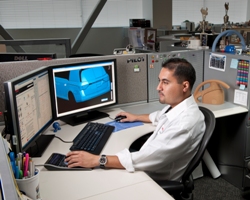 How
did he earn a mechanical engineering degree from Cal State Northridge,
despite the odds? He took out loans. He tutored kids in math. He worked
construction. He engineered his own future. How
did he earn a mechanical engineering degree from Cal State Northridge,
despite the odds? He took out loans. He tutored kids in math. He worked
construction. He engineered his own future.
“My uncle took me to
Universal Studios to see the Knight Rider set when I was 10 years old,”
he said. “I spent most of my time as a teenager drawing cars. I wanted
to seek that path. I wouldn’t settle for anything else.”
In 2007, he went to a job
fair, applied at American Honda. He was soon hired. It amazed him, he
said, that he had won what he wanted.
“If I had words of
advice,” Chavez said, “it would be, never stop dreaming. No matter what
the hardship, you can do it. You’ll finally get there.”
The need for innovation and improving the future of young Latinos is also apparent to the Raza Development Fund.
Mark Van Brunt, RDF’s
Chief Operating Officer, said that lending for education has been
expanded to include parochial schools, and all schools public and
private, as long as they are not performing below district standards.
The Fund has provided financial support to more than 100 charter schools
in the last 10 years.
A contract has been
signed, he said, with the Saint Anthony School in Milwaukee, where 99%
of the 1,500 students are Latino, and 50% of those are first generation
immigrants. Another contract, with Saint Joseph’s High School in South
Bend, Indiana, using new market tax credits (NMTC), will finance
construction with the understanding that the school will send at least
200 students to Notre Dame University in the next decade. Both contracts
call for regular review by RDF of school performance.
In
addition, Van Brunt said, RDF is creating a Latino school leadership
fellowship program which will send aspiring educators to the finest
universities for training. Good leaders mean better opportunities for
school children. “To lose a child and the opportunity to advance often
sets that child back several grades for the rest of that child’s school
career,” he said.
Paul Brinkley-Rogers is a former reporter for Newsweek, The Miami Herald, The Arizona Republic, and the Phoenix-based Spanish language newspaper La Voz. He was a member of The Miami Herald’s reporting
team that earned a Pulitzer Prize for coverage of the highly emotional
child custody dispute in 2001 over Elian Gonzalez, the little boy who
survived the sinking of the boat bringing him and his mother from Cuba
to seek a new life in the United States. Paul won the Overseas Press
Club’s Malcolm Forbes award in 2002 for writing about the economic and
political turmoil in Argentina.
|
|
I Am the American Dream: Erika Tatiana Camacho PhD
Sometimes innovation
comes in the form of one person, in this case a young woman of Mexican
immigrant parents in East Los Angeles who once sold clothes in the back
alleys and against all odds, became a professor of mathematics at
Arizona State University.
 Fierce
determination and will power enabled Erika Tatiana Camacho, 36, to
accomplish what is still the extraordinary for a Latina which is, a
cherished and coveted career at the highest level in the sciences. Fierce
determination and will power enabled Erika Tatiana Camacho, 36, to
accomplish what is still the extraordinary for a Latina which is, a
cherished and coveted career at the highest level in the sciences.
She innovated. Her family
did not have a computer so she wrote her application to prestigious
Wellesley College in longhand. “I said, ‘I am very sorry. I know the
instructions said to type (the application).’ At the interview, they
told me the letter tugged at their heart.
“When I was at Garfield
High School,” Camacho said, “I did not know how poor I was. I had holes
in my shoes.” When she arrived at Wellesley, an East Coast school for
women from wealthy families, she quickly discovered that she had come
from poverty.
Everything was stacked against her, she said.
But the fact that she
went on to Cornell University to earn her doctorate degree, shows that
despite the racial prejudice she encountered, despite the gender
prejudice, despite the jeers and teasing because she was a Latina who
dared to excel in a field dominated by Anglo males, it is possible to
wage a personal battle and succeed.
“I am the American dream,” Camacho said in a voice that was a mix of pride and humility.
The story of what she had
to overcome, and her desire for other Latinas to do the same “is a very
passionate topic for me,” she said. “I was born n Mexico (Guadalajara).
My mom was a house cleaner. She read a lot and was good at numbers. My
stepdad was a janitor. I started working when I was 13 years old. I
worked from 8 to 8 in the streets of Los Angeles.
“My wish was to become a
cashier – that was more than my parents did. I was good with numbers. I
didn’t know English, but math was a common language. I was tired of
being poor.”
She was fortunate that the extraordinary math teacher Jaime Escalante was her mentor at Garfield High (http://garfieldhs.org/). Escalante’s efforts to show that inner-city kids could master calculus, was portrayed in the 1988 film Stand and Deliver with
Edward James Olmos in the title role. Escalante, who passed away in
2010, saw Camacho’s talent and told her she was a perfect pick for
Wellesley (http://web.wellesley.edu/web).
Other people, however,
told her she should try something different. She wondered about
engineering. “I got into heated arguments that girls are not smart
enough, that they should not go into that field. I was told don’t go
into engineering. It’s not for you. We (Latinas) see engineering as a
white guy profession, a nerdy thing.”
But all that opposition,
often from friends and family, “made me want to show I have what it
takes. All of us (Latinas) can be engineers. It takes hard work to do
it.” Good grades meant that Camacho won fellowships. Her first employers
paid off her student loans.
She also had to deal with
lukewarm support, and hostility, even at Wellesley for her selection of
mathematics as a major. “I got an A- in two math classes. My mentor
there said ‘You are not PhD material. Be happy with your BA and teach.’”
A professor would not write a letter of recommendation for her to go to
graduate school, even though MIT invited her to deliver a lecture.
“Many times I called
Jaime Escalante to tell him about these experiences,” she said. At one
point she was treated by an Anglo nurse who claimed angrily that Camacho
had used her ethnicity to “steal” a slot at Wellesley. “Because
of people like you, my daughter did not get into Wellesley,” her accuser
declared.
Camacho said even as a professor, she still has to deal with what she calls “the impostor syndrome.”
“I still have to prove
myself because I have brown skin and I am a woman. I have to work twice
as hard to be accepted.” In her profession, she said, too often she is
viewed as “the Latina who is not really cut out to be a mathematician.”
Camacho said she
understands now that “If you grow up in an environment in which you are
told you are not good enough, that will become a self-fulfilling
prophecy.”
She is a frequent speaker
at conferences where there are workshops urging young women, and their
parents, to be interested in science and technology. The U.S. National
Security Agency has given her an award issued for guiding undergraduates
in research. She started a summer program at Loyal Marymount University
in Los Angeles for 16 students showing a potential to study in the
sciences.
When she is not teaching
as an assistant professor of mathematics at the New College of
Interdisciplinary Arts and Sciences at Arizona State University, she is
doing research in the interface of mathematical applications to biology
and sociology including transcription networks in yeast, interactions of
photoreceptors and fungal resistance under selective pressure.
|
|
Beyond Bilingual: Learning Mandarin Chinese
There is something energized and determined about parents whose children attend Starr King Elementary School in San Francisco.
“Why just be bilingual?
Learn three languages,” says Michaelia Szarnicki, whose half Cuban, half
Ethiopian children are experiencing five hours a day of Mandarin
Chinese immersion, which includes math and other classes taught in
Chinese.
“I asked myself, what
will the world be like 20 years from now,” she said. “I saw Asian kids
hitting the top of the mark in education and I decided that the future
will be Chinese and my four children will be ready for it. They will be
trilingual.”
Five years ago, Star King (www.starrkingschool.net)
was on the verge of closing because of declining enrollment. But after
Mandarin was first introduced in kindergarten in 2005, parents competed
to get their children into the school. Enrollment more than doubled from
151 students to 386 today. Two thirds of the students are in Mandarin
immersion, and Latino children are 10% of the total, said Principal Greg
John.
Ten full time Chinese
teachers are on staff, John said. Hiring is sometimes a challenge, but
video conferencing and Skype enable interviews with candidates in
mainland China and Taiwan. He wants the best. “Kids going into immersion
are living at a time so powerfully different from the age I grew up
in,” said John, who is 57. “To develop their minds and be successful in
the job market, kids need this.”
Twenty-one San Francisco
elementary schools have similar programs. Plans are being made to bring
Chinese immersion to middle schools, and then to high schools, so that
those who start in kindergarten develop real fluency.
Szarnicki is so committed
to the work her children are doing that she has hired a woman tutor to
come from China to live in her home. More and more Hispanic children are
participating, as parents see grades soar and children gaining fluency.
“I want to get the message out to Latino and African American parents,”
Szarnicki said. “Their children can do this.”
Another Starr King
parent, Maria Esquivel, is a medical assistant who came to the USA from
Guatemala in 1986 when she was 11. Her husband, Nelson, is a tow truck
driver from Cuba who came to the United States in 1989 when he was 15.
Their daughter, Jade, a 5th grader, has been learning Chinese since kindergarten.
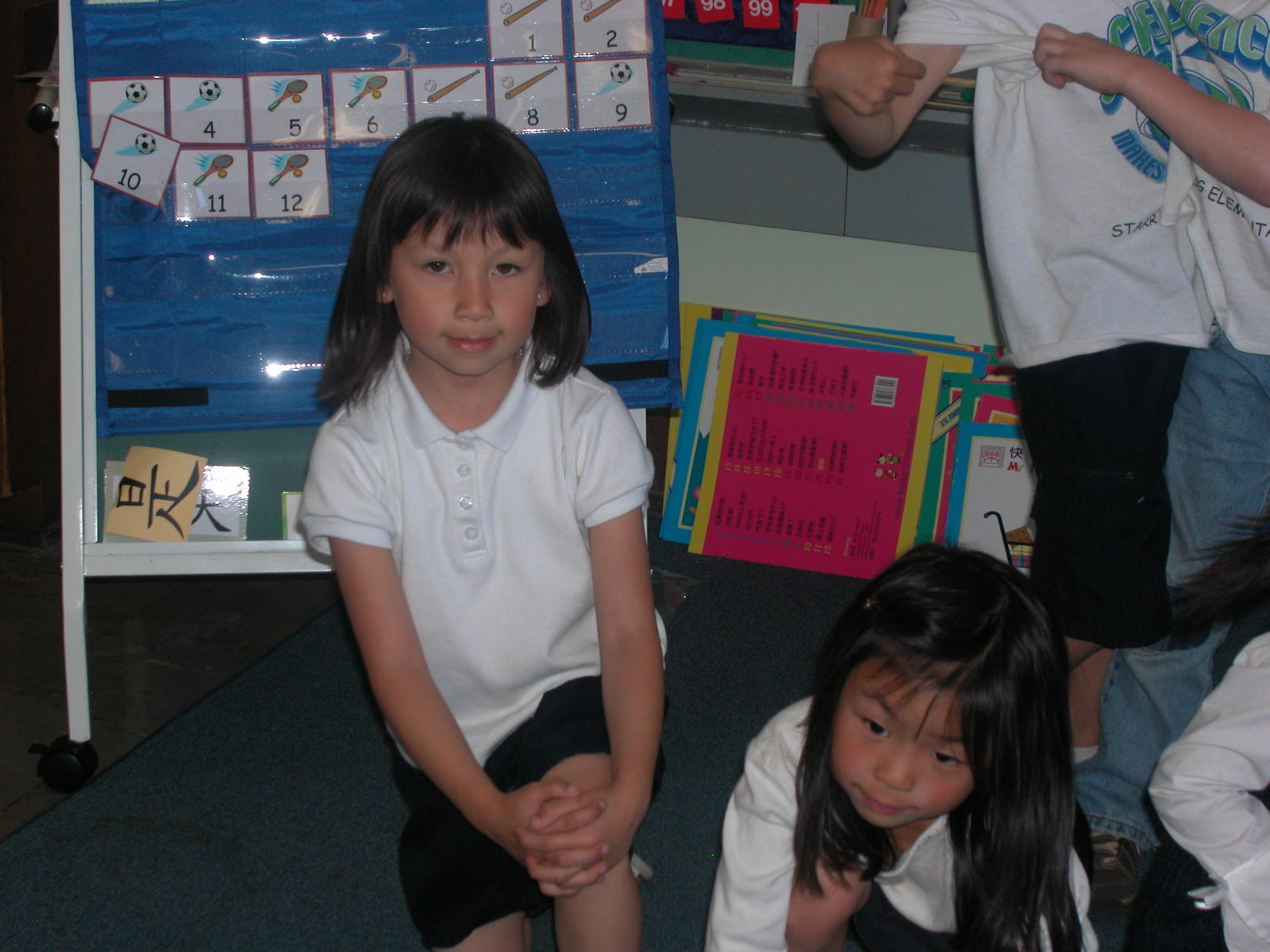
Esquivel
wants her child to experience several cultures. “Jade is 10 years
old,” she said. “Being able to speak three of the most powerful
languages in the world can only be a plus for anything you want or
decide to do with your life, not only in college or for a good job but
for traveling and just living life.”
Luz Esquivel, who is from
Morelia, Mexico, and who is a bakery cashier, is scouting Starr King
for her two sons. “I want a piece of that school for my
children.” She said. “Learning Chinese is difficult, but it makes
children smart. I have seen it with my own eyes. My neighbor’s kids –
Mexican like me - caused a sensation when they spoke Chinese” to waiters
at a Chinatown restaurant.
Another Mexican immigrant
parent, Jorge Baca, said he supervises his daughter Carmen, 5, who is
already practicing writing Chinese and hopes to attend a school near
Starr King.
“In this country I do
yard work,” he said. “My daughter will speak three languages and she can
be a doctor in several countries. She will be able to make that
choice.”
Parents in the Bay Area
whose children are taking Mandarin (Cantonese immersion also is offered
at three schools), are well organized in the Mandarin Immersion Parents
Council (http://miparentscouncil.org). Their website is a place where parents can exchange information and view videos filmed by proud moms and dads.
Elizabeth
Weise is Council President. Her husband is Chinese-American. Their
daughters Eleanor and Margaret are in 5 and 3 grades respectively at
Starr King. At the end of this year, 240 students in six grades – K-5 –
will be in Mandarin immersion, she said.
The rapid shift to
studying Chinese has changed the character of Starr King. The school is
in the lower income Potrero Hill district where many residents are
Latino or black.
Most students in Mandarin
immersion are Anglo or Asian, and there are also many mixed race
children, Weise said. “Most of the Latino children come from highly
educated bilingual families.” But there is an increasing number of
“working class immigrants without a college education who are starting
to understand that if ‘My kids can speak Spanish, English and Chinese, they can rule the world.’”
Some Latinos are not
happy with the sharp drop in children taking Spanish immersion. But on
the other hand, Mandarin “integrates schools” Weise said. “White parents
help raise funds. Their children raise the English ability of the
Spanish speaking kids.”
Carmen Cordovez, from
Quito, Ecuador, has a son, Sebastian, in kindergarten, and a daughter,
Isabella, in 3 grade. At home, she speaks only Spanish to her children.
Her American husband speaks English at home. Her kids are, in other
words, learning three languages at the same time.
Cordovez said it is clear
to her that at a very young age children learn languages quickly. She
said she and her husband are sharply focused on what their children are
accomplishing. “We live simply,” she said. “We are not super spenders.
We don’t have a big TV or a car. We want the best for them.”
“My daughter told me she
wants to learn Chinese. I said, ‘Mija…it’s too hard.’ She said, ‘Papi.
You came to this country. That was hard, but you did it. Let me do
this.’ When she said that, it made me proud” said Baca.
|
| Three Schools, Three Visions
The National Center for
Education Statistics says there are 98,800 public and 24,500 private
schools in the USA. There are 81.5 million students: 37.9 million
primary, 26.1 million secondary, and 17.5 million in college.
One in four
kindergartners are Latino. One fifth of K-12 students are Latino. The
numbers are growing fast. Student achievement remains troubling.
However, some schools
have imaginative programs with inspired leadership and teachers. The
curriculum and the homework are demanding. The children do well. Their
grades are high and parents with a passionate interest in their
children’s future seek out these schools. Often there are waiting lists.
Voces chose to look at two charter schools and one private school where the vision is strong.
The Equity Project (TEP)
is a publicly funded, privately run charter school in Manhattan with 15
teachers and 247 students in grades 5-8. It was started in 2009 by a
then 32-year-old Yale graduate named Zeke Vanderhoek on the theory that
excellent teachers are critical for success: not small class size,
talented principals or technology.
Great teachers, hired
from across the USA, have meant that grades are up. But not all great
teachers are prepared to teach school in trailers in an inner city
neighborhood where poverty exists. Retaining teachers remains an issue
even though the base salary, $125,000 per year, is twice that of New
York City public schools.
TEP (http://www.tepcharter.org),
which operates from a series of trailers painted red, is not going to
cut and run, however, Vanderhoek says. It (TEP) is only $3.5 million
short of a $28 million capital campaign to build a permanent facility.
The school has shown
success with student performance. But it is still an experiment in the
making, Vanderhoek says. Committed teachers are a great asset, but
poverty is a drag on student performance. “Are we where we want to be?
No. Are we on the road? Yes. We are still very much a start up in many
areas.”
TEP ranks in the top 1%
of New York area middle schools. It ranks especially high in safety and
respect. In areas of student proficiency TEP is still behind: 55% show
proficiency in math, up from 30% in the first year. Only 30% show
proficiency in English skills. Some 88% of students are Latino
immigrants, from the Dominican Republic and Mexico and the remainder are
African American.
TEP is using Latin and
music in an attempt to boost language development. Parents clearly love
what the school is doing. There is a long waiting list and openings for
students are decided by lottery.
Like TEP, Phoenix
Collegiate Academy (PCA), a back to basics charter school, is housed in
temporary space: a 22,000 square foot former bowling alley and thrift
store.
PCA (http://phxca.org)
had exceptional first year results in the 2010 AIMS exams given by the
state of Arizona. Some 69% of students passed in reading, 63% passed in
math – including 28% who exceeded standards, and 65% passed writing.
Latinos are 81% of the student body. The school was founded in 2009, and
is presently serving grades 5 through 9. It will grow one grade per
year until it adds 12 grade.
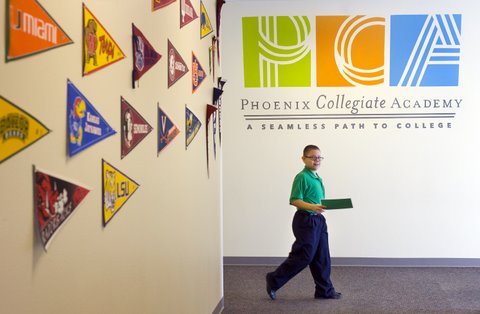 Akshai
J. Patel, managing director, said students “have to be willing to
develop the ability” like the school “to do innovative things.” Patel,
like Rachel Bennett, the school’s founder, is an alumnus of the inspired
education approach of Teach for America . Akshai
J. Patel, managing director, said students “have to be willing to
develop the ability” like the school “to do innovative things.” Patel,
like Rachel Bennett, the school’s founder, is an alumnus of the inspired
education approach of Teach for America .
After they left Teach for
America, Patel and Bennett spent some time studying successful schools
in other parts of the country. “Sure we wanted to attain state
standards,” he said, “but we wanted to go much higher.”
Students are looked at
closely to identify their strengths and weaknesses and teachers are
studied to see if they are “a mission fit.” Students are required to
take rigorous course work in a foreign language, math and science.
“Enrichment classes” are available in dance, origami and music.” There
are no text books. Instructional material is “teacher made.”
Patel said that school
staff still goes door-to-door to tell parents about PCA. “We knock on
doors in areas around us starting in spring,” he said. The school
encourages parents to become involved. Initial reactions from pupils is
often that the school is “too strict, too hard, and gives a lot of
homework.” Parents, accustomed to low performing schools in that part of
Phoenix, appreciate that, however.
BeBei Amigos Language School (http://www.beibeiamigos.com/)
is a private school in Phoenix serving children ages 1-5 in toddler and
preschool with Spanish and Mandarin Chinese language immersion
programs.
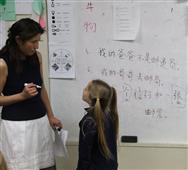 A
second school – Arizona Language Preparatory – has been added, and is
offering kindergarten. Plans are to add a grade each year through the
6th grade, enabling BeiBei graduates to continue to perfect Chinese and
Spanish. Co-founder Emily Sheen said that the school has applied for
charter school status, and it may soon add Arabic immersion so that when
English is factored in this will mean that children will be using four
languages. A
second school – Arizona Language Preparatory – has been added, and is
offering kindergarten. Plans are to add a grade each year through the
6th grade, enabling BeiBei graduates to continue to perfect Chinese and
Spanish. Co-founder Emily Sheen said that the school has applied for
charter school status, and it may soon add Arabic immersion so that when
English is factored in this will mean that children will be using four
languages.
There is strong evidence
that language training helps academic performance and in a child’s
intellectual development. In addition, said Sheen, who is from Taiwan,
children fluent in several languages will be true citizens of
globalization. They will be prepared for a future like no other American
kids.
“In a foreign country,
most students learn English,” she said. They grow up bilingual. But
American students typically do not enter their working years with
multilingual fluency. “We need to deal with what is going on in the
world,” she said.
Evidence that
BeiBei students are gaining fluency is apparent when a child asks for
something. “The child asks me in Chinese,” she said. “I say ‘No!’ He
goes to the next person and asks in Spanish. Then the next person, and
asks in English.”
Sheen said BeiBei was
founded by parents who were not happy with language opportunities in
regular schools. She is married to an engineer from Spain. Her children,
who are growing up speaking English, “need to communicate with their
grandparents who only speak Chinese or Spanish.”
Sheen has an engineering
MBA from the University of Texas. The other co-founder, Sean Diana, has a
MA in Education and is studying for a Phd at Arizona State University.
BeiBei has 39 students. The director, Denise Ramos, is from Sonora, Mexico. Four teachers are Latina, three are Chinese.
|
| Science: Careers in Technology for Latinas
One of the highlights of
the annual Hispanic Women’s Corporation (HWC) conference in Phoenix was a
presentation titled Inspiring STEM Leadership.
The outline for the
workshop read, “Girls lose interest in science and math at junior high
levels. Understand what you can do as a school administrator, teachers,
family and friends to make a difference in promoting Science,
Technology, Engineering and Math (STEM) for our children. Career
opportunities will be presented.”
The key speakers were
Gabriela Gonzalez, the Intel Corporation’s University Programs Manager
in the Academic Programs and Research Office, and Professor Erika
Tatiana Camacho, a mathematics professor at Arizona State University
whose personal story is profiled this month separately in Voces.
Camacho reminded the 40
young women in the audience that although there are many STEM jobs
available, only 2% of those studying a STEM subject are Latinas. Latina
mathematics professors are as rare as diamonds, it seems.
Gonzalez, who has
master’s degree in manufacturing engineering, is a Phd candidate at
Arizona State focusing on young women studying the sciences. “If I look
at Hispanic girls our enrollment (in STEM) is growing, but it is flat.
Latinas are less than 1% of students graduating in engineering. I
enrolled in my field 20 years ago and for 20 years I have been involved
in community outreach – speaking to girls, mostly Latinas.”
She is especially
involved since 2005 in Hermanas: Diseña Tu Futuro (Sisters: Design Your
Future), an organization which has brought thousands of middle and high
school students to Stem presentations.
Gonzalez said there are
several reasons that Latinas are not involved in STEM. “Part of it is
because of socio-economic factors. Parents are a role model. Most
parents usually come to this country and engage in lower paying jobs.
Often, they themselves do not have a college education. These parents
are not likely to be in technology fields. They had to make money to
survive.
Parents may not have the
skills to help a child doing homework in a STEM field. “I see it in my
own family,” said Gonzalez, who emigrated to the US from Monterrey,
Mexico, when she was 13. “The value of an education takes second place
to athletics and entertainment.”
Sometimes in her
outreach, Gonzalez said, “When we ask a girl, ‘What is engineering?’ she
has no idea. You ask ‘What is a teacher, a doctor?’ and they have a
clearer idea. Most adults don’t know what engineers do. Culturally,
Latinas tend to stick to cultural roles.”
Here and there, some
organizations are trying to interest young women. Cecilia Hernandez of
the American Chemical Society in Washington DC, is an immigrant from
Cartagena, Colombia. She helps run the Society’s SEED Project which has
involved more than 10,000 students – a small portion of who are Latinas –
in summertime chemistry study.
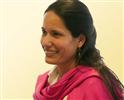 Judith
Camacho, executive director of the Society for the Advancement of
Chicanos and Native Americans in Science (SACNAS) said that 55% of the
4,000 participants at the group’s annual meeting in November were women.
They appeared to be especially interested in biological sciences and
medical schools, but not in chemistry, physics or math. Judith
Camacho, executive director of the Society for the Advancement of
Chicanos and Native Americans in Science (SACNAS) said that 55% of the
4,000 participants at the group’s annual meeting in November were women.
They appeared to be especially interested in biological sciences and
medical schools, but not in chemistry, physics or math.
“In the past 20 years,”
she said, “it has been impossible to come across more than two Latinas
mathematicians in one year. Camacho is a mathematician herself. Lack of
interest in STEM she said is 40 years out of date. Parents and young
people should wake up to the fact that careers are available that cannot
be matched by any other profession. “We should be done with ‘As long as
you finish high school…”
Doris Roman, a Puerto
Rican educator and engineer living in Phoenix who for many years has
been working hard to connect Latinas with the sciences, said that
something needs to be done on a national level to raise the level of
interest, and willingness, to be a scientist or work in technology.
Maybe churches could be
involved, she said. Science should be part of the Hispanic community’s
culture. Community Colleges could organize to attract more women.
Politicians, community leaders, local organizations should spread the
word and increase awareness so that parents also become involved.
“Latinas are very
powerful, strong willed women culturally,” Roman said. “Talk about
‘Amazon women’ … hello! And if you give them a STEM education, watch out
world. We can do anything: find a cure for AIDS, invent a new
cellphone.”
|
|
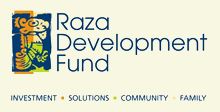
IN THIS ISSUE...
- A Message from Tommy Espinoza, RDF's President and CEO
- Innovation in Education: Why is it Needed and Will it Work?
- I Am the American Dream: Erika Tatiana Camacho PhD.
- Beyond Bilingual: Learning Mandarin Chinese.
- Three Schools, Three Visions.
- Science: Careers in Technology for Latinas.
|
|
Community Corner
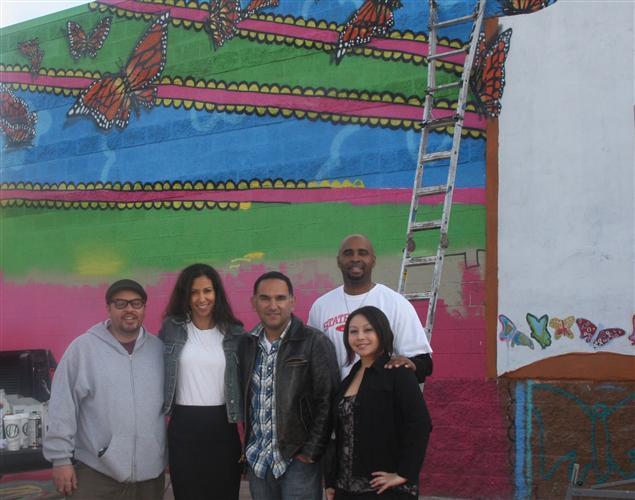
The
late Cesar Chavez had many great words of encouragement for people whom
he represented, and if you’re driving through south Phoenix on Central,
going toward the downtown area, off to the east you might be able to
catch a glimpse of a few of these empowering words on a mural at a local
school.
Fittingly,
the school, which is located in an underserved area of Phoenix, is
called Cesar Chavez Community School. Recently, a project that was
sponsored by State Farm® and Raza Development Fund was completed and
unveiled for the school’s Cesar Chavez Day celebration. Victor Mason, a
south Phoenix State Farm agent, attended the unveiling of the mural, and
for Mason it was yet another event he was able to attend in the
community that he invests so much time and effort in improving.
The
State Farm office where Mason works is only a few miles away from Cesar
Chavez Community School. Mason not only works in the area but said
south Phoenix is the community that he calls home. Mason said he’s
“embedded in the (south Phoenix) community” and it’s a community that he
spends a lot of time in with his children.
Prior
to the unveiling, Mason was able to meet the local artists working on
the mural when it was only about 40% complete. Mason said “anytime you
get to see something from the beginning it’s like ‘oh ok it’s coming’
but when you see it at 100% you realize how much energy and time was put
into it.”
One
thing that Mason mentioned, unique to the mural project at Cesar Chavez
Community School, was the fact that some of the students were able to
work alongside the artist in painting the mural. “To see that the kids
collaborated with the artists to create that (the mural) is the most
exciting piece of it all because those kids can all walk past that mural
five years from now or 20 years from now and say ‘I did that, I
impacted my community and put my stamp on it.’”
Due
to district budget cuts, Cesar Chavez Community School has not had the
means to have an art program for that past few years, and for local
artist Gennaro Garcia, the mural was a chance for him to give back to
the community by allowing some of the students to participate in the
painting process. This student-artist collaboration has not only served
as an art lesson but also as a way to instill pride for the community in
the students.
The
community surrounding the school is indeed classified as “underserved”
but in order for things to get better, it takes people who have
the pride for their community to stand up for it and make changes. These
children have been given this pride needed to make changes and for all
parties involved, this is the biggest return on investment anyone could
ask for.
Cesar
Chavez’ words on the mural read: “We cannot seek achievement for
ourselves and forget about progress and prosperity for our community …
our ambitions must be broad enough to include the aspirations and needs
of others, for their sakes and for our own.”
For
Mason and Garcia, their ambitions for themselves include bettering the
community and are achieved through their commitments to the people of
the community.

The
Hispanic Women's Corporation empowers Latinas and youth to achieve more
by serving as a voice for their community. The HWC's annual conference,
which takes place this year on October 11 and 12, is a gathering of
great minds where inspiring testimonials can be heard, for more info on
the conference please visit:
www.hispanicwomen.org.
|
|

